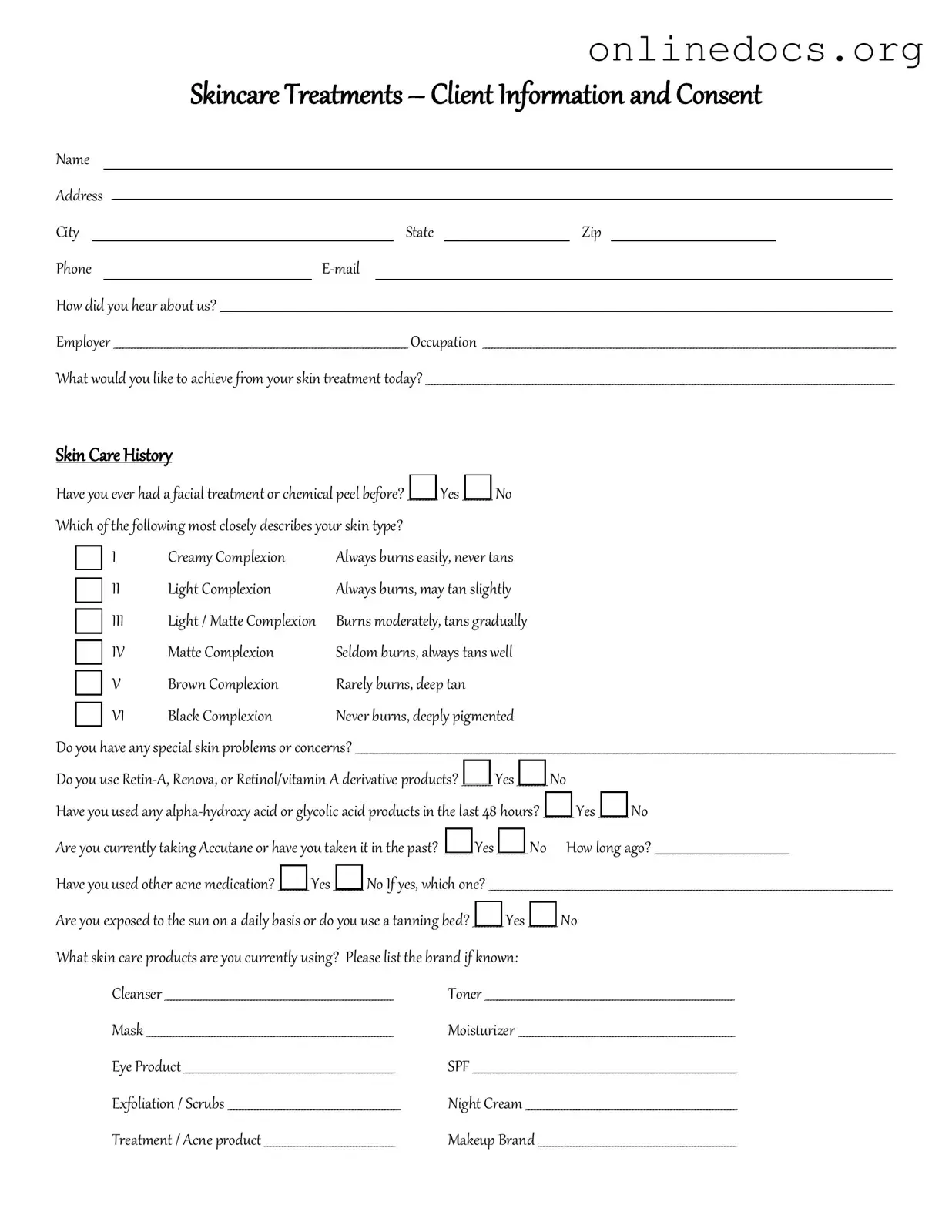Filling out a Facial Consent form is an important step in ensuring a safe and effective treatment experience. However, many individuals make common mistakes that can lead to confusion or complications. Understanding these errors can help ensure that the form is completed correctly.
One frequent mistake is failing to provide complete medical history. It is crucial to disclose any past or current medical conditions, allergies, or medications. Incomplete information can result in adverse reactions during the facial treatment.
Another common error is not reading the consent form thoroughly. Individuals often rush through the document without understanding the implications of the consent they are giving. Taking the time to read each section carefully can prevent misunderstandings later on.
Some people neglect to ask questions if they do not understand certain terms or procedures outlined in the form. It is important to seek clarification from the practitioner. This ensures that all parties are on the same page regarding the treatment.
Additionally, individuals sometimes forget to sign and date the form. Without a signature, the consent is not valid. Ensuring that the form is signed and dated is a simple yet critical step in the process.
Another mistake is not updating the form when circumstances change. If there are changes in health status or new allergies arise, it is essential to update the consent form accordingly. This helps protect both the client and the practitioner.
Some individuals also fail to provide accurate contact information. This can hinder communication in case follow-up is necessary. Providing a reliable phone number or email address is vital for post-treatment care.
People may also overlook the importance of specifying any concerns they have about the treatment. Addressing these concerns in the consent form can lead to a more tailored and satisfactory experience.
Lastly, individuals sometimes assume that consent is a one-time agreement. Consent should be considered ongoing, and it is important to communicate any new information or changes in circumstances before each treatment session.
By being aware of these common mistakes, individuals can fill out the Facial Consent form accurately and ensure a safer treatment experience.
